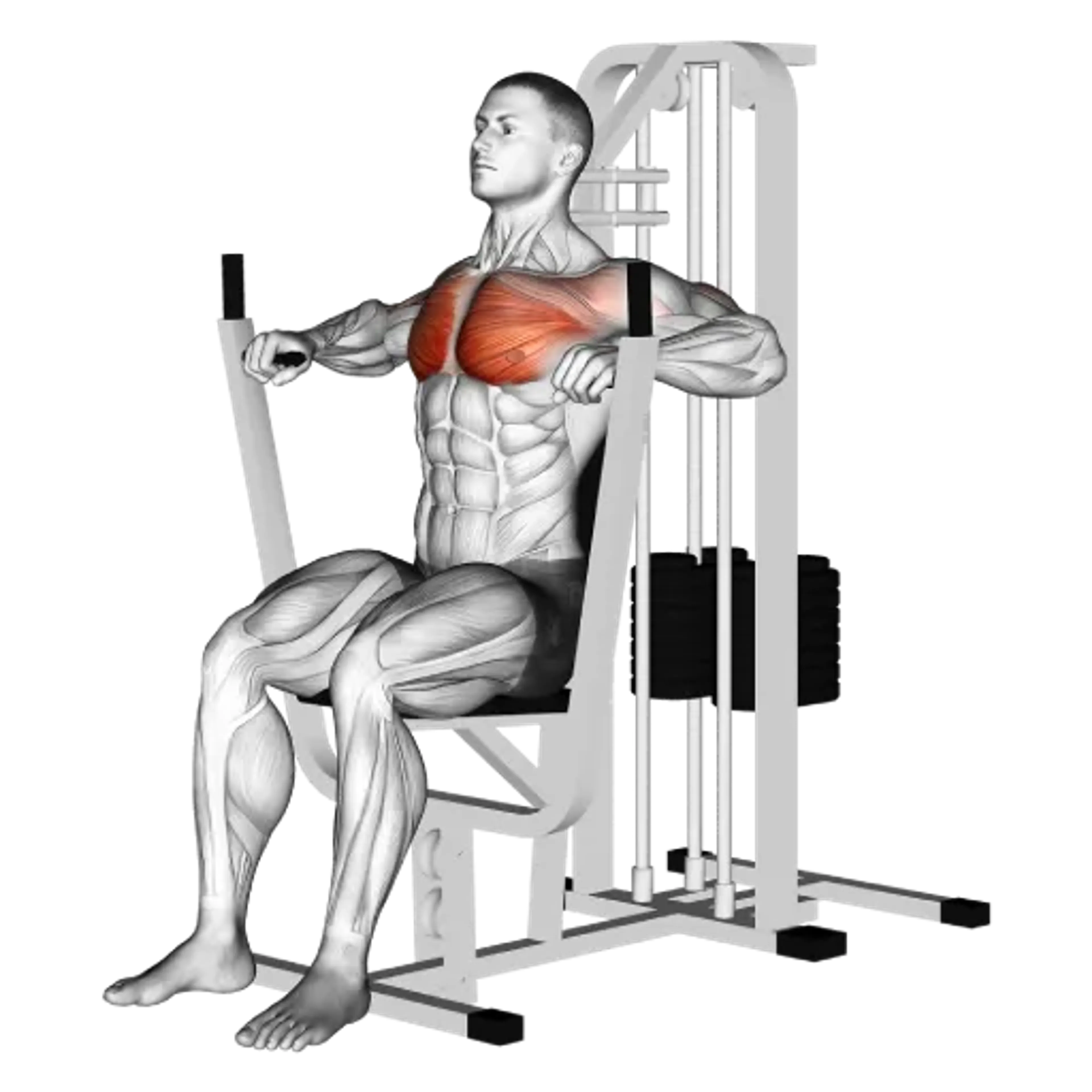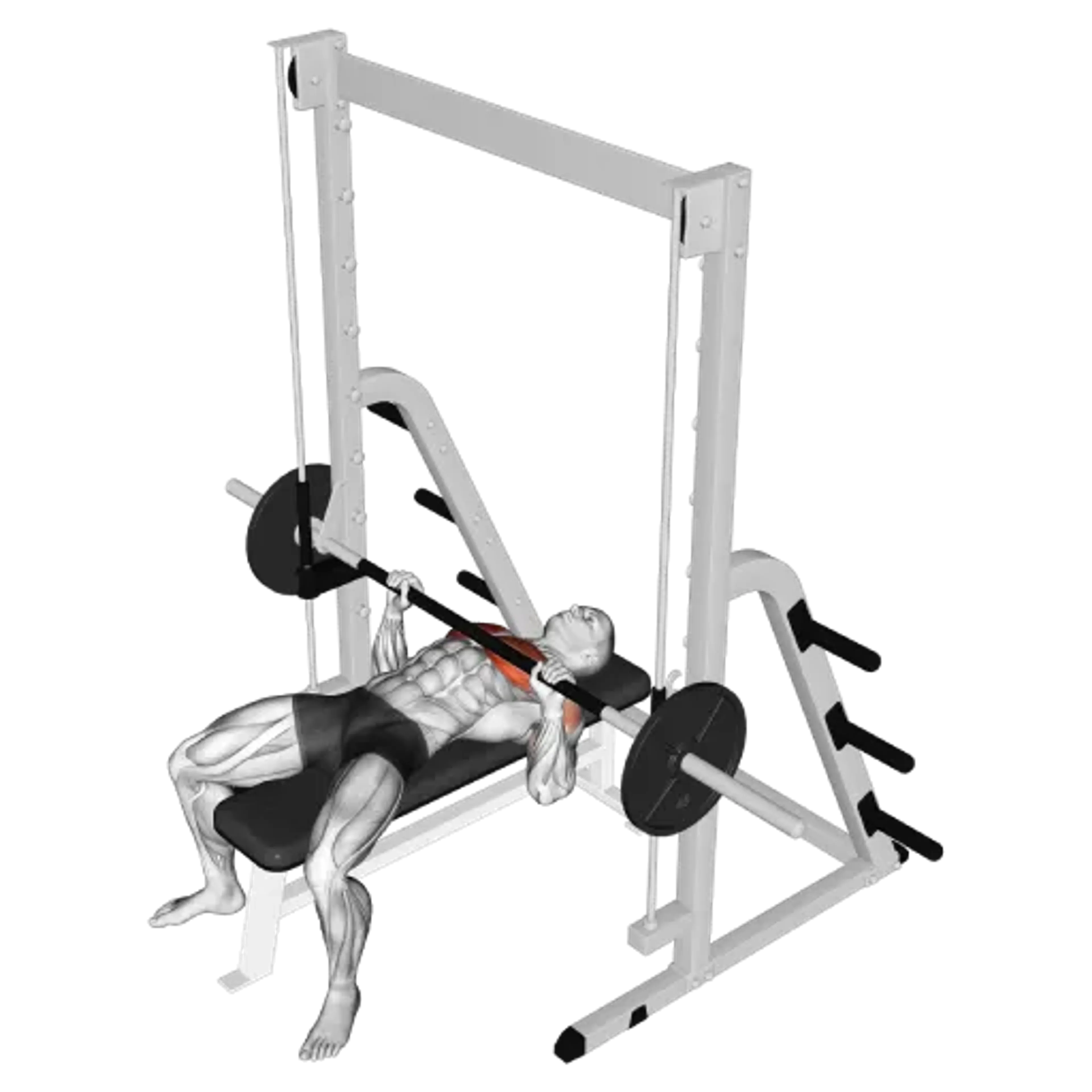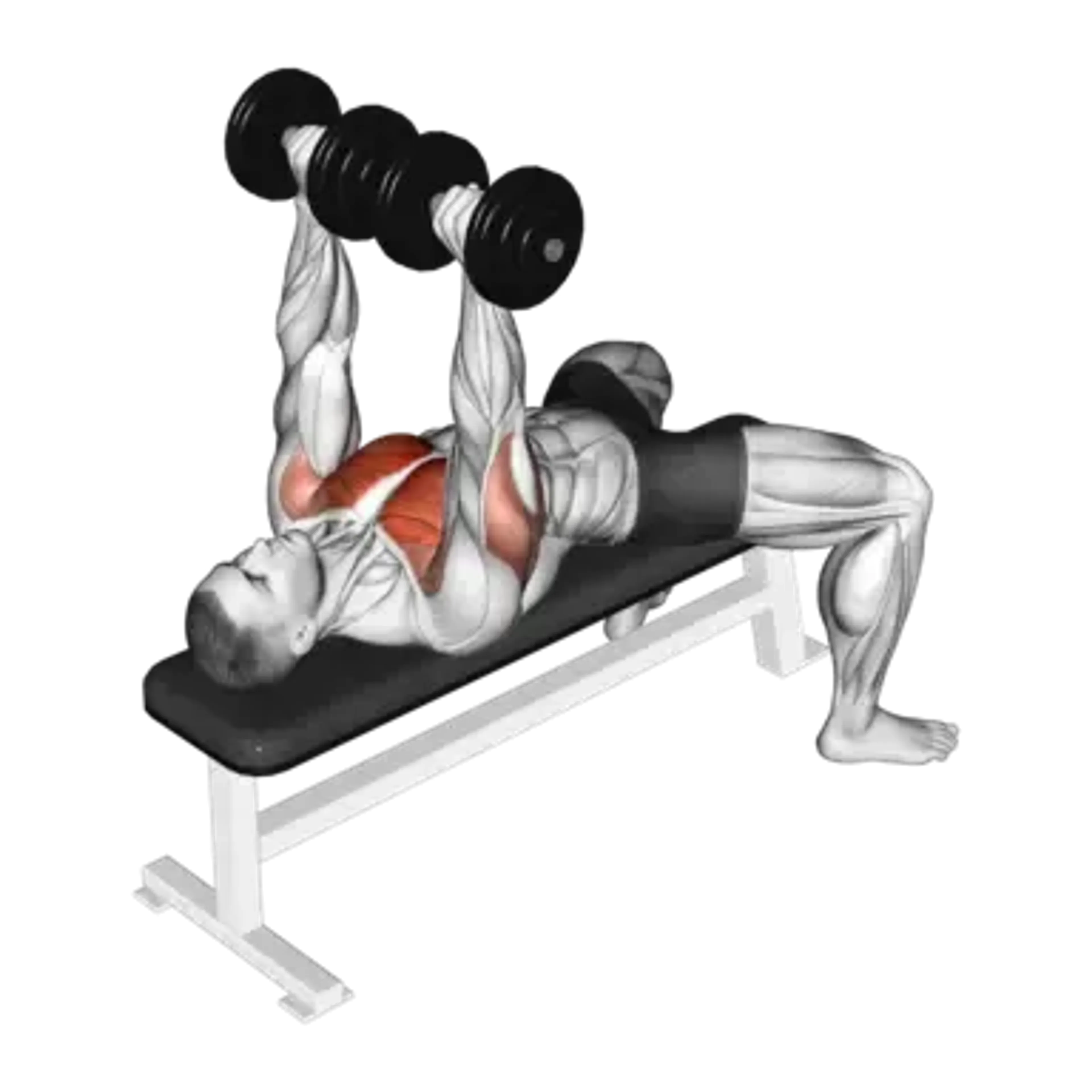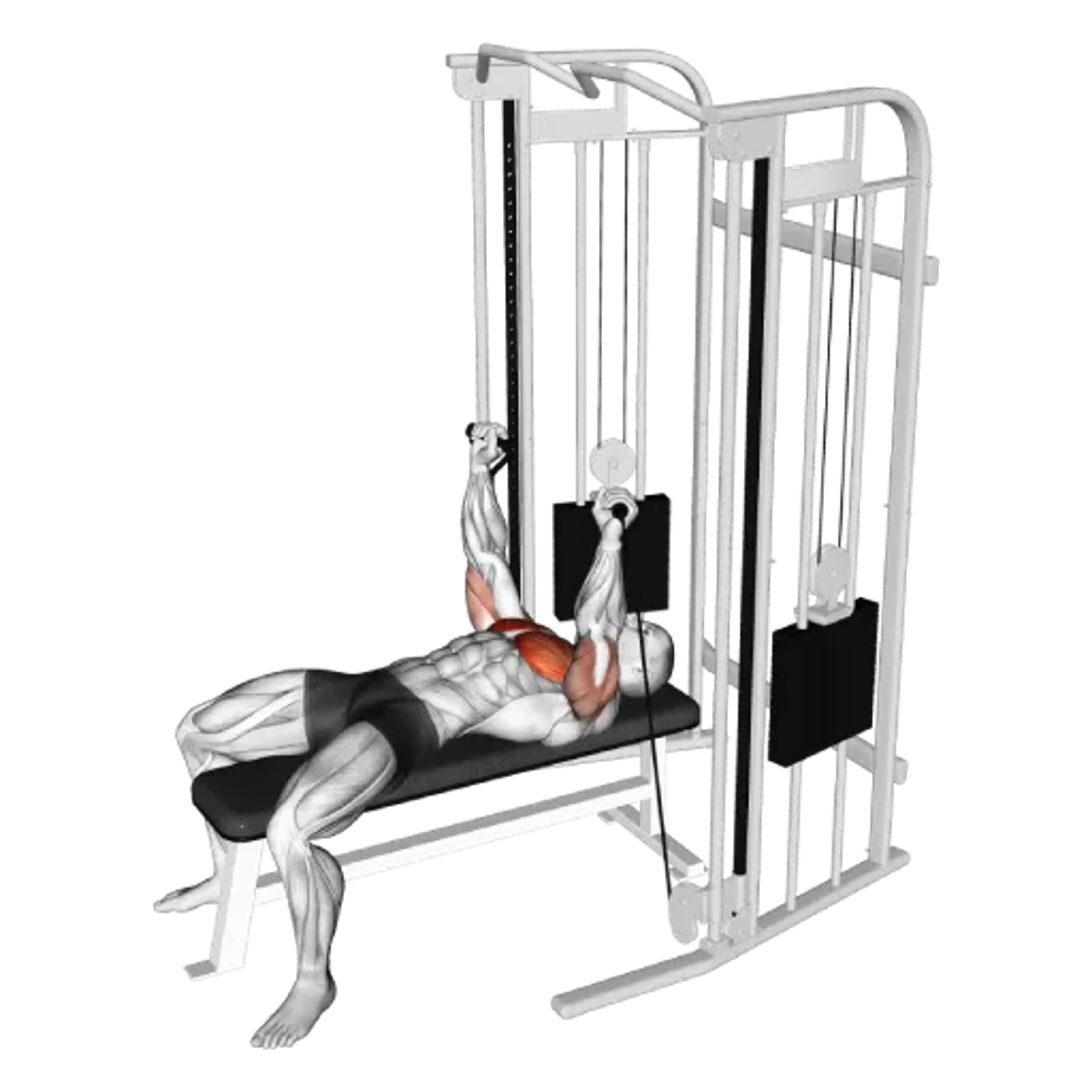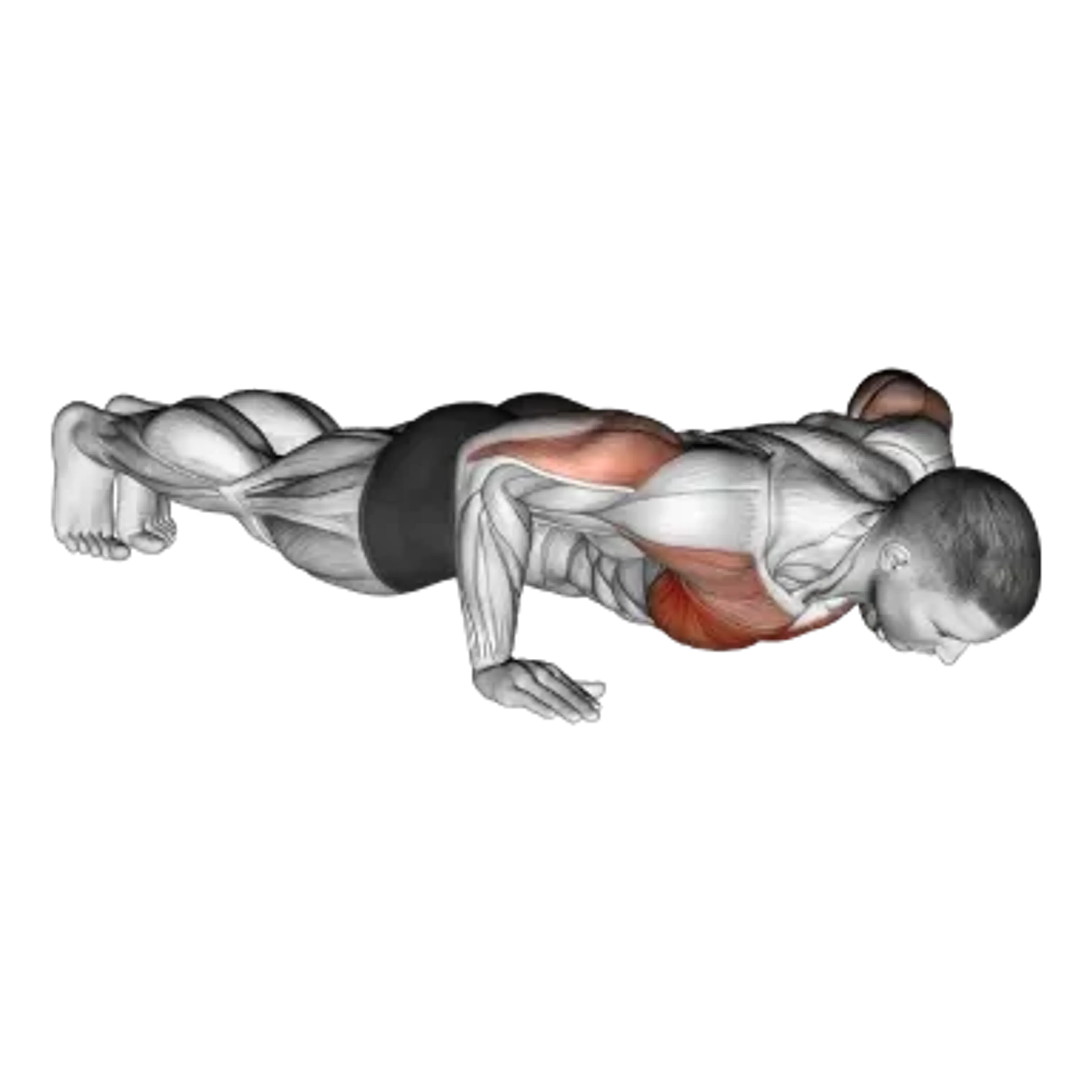Leverage Bench Press
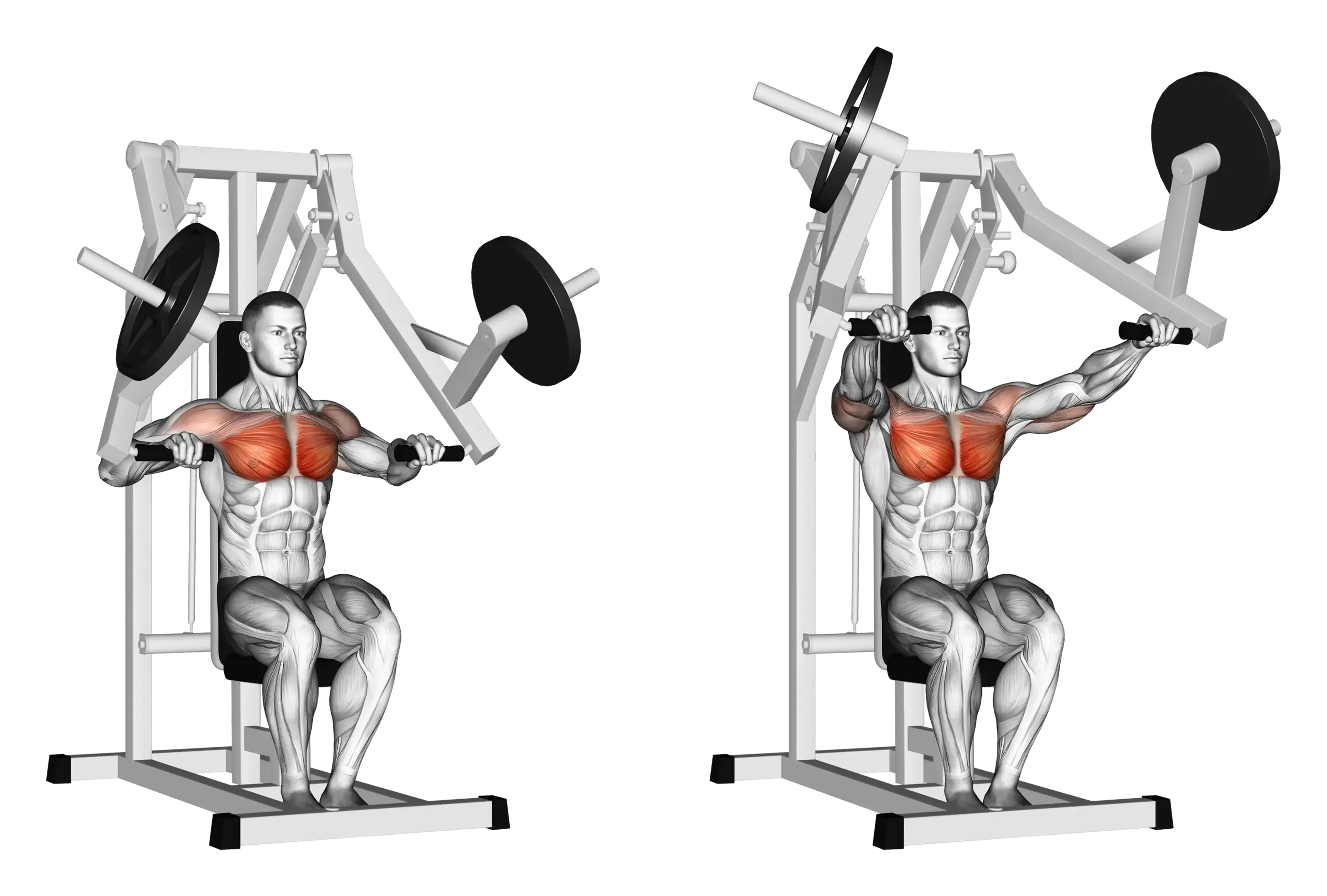
Overview
- Primary Focus:
- Chest.
- Equipment:
- Machine.
- Difficulty:
- Beginner.
General Information
Leverage Bench Press is a compound exercise that primarily targets the chest and secondarily activates the triceps and front shoulders. It is a beginner-level movement that replicates the motion of a traditional barbell bench press but with added safety and stability due to the machine’s guided path.
This exercise is performed on a plate-loaded leverage press machine, where the user pushes two handles in a pressing motion while seated or lying back. The fixed path of the arms helps reduce the risk of injury while still allowing for heavy lifting and progressive overload.
The leverage bench press is ideal for beginners learning proper pressing mechanics or for more experienced lifters who want to isolate their chest muscles without the need for a spotter. It’s often included in chest day routines as a primary or accessory lift.
Muscles Worked
- Pectoralis Major
- Primary
- Triceps Brachii (Long Head)
- High
- Triceps Brachii (Lateral Head)
- Medium
- Triceps Brachii (Medial Head)
- Medium
- Deltoid
- Low
- Serratus Anterior
- Minimal
Instructions
- Adjust the seat so that the handles are at mid-chest level when seated.
- Sit back and press your upper back and hips firmly into the bench.
- Place your feet flat on the floor for support.
- Grip the handles with a shoulder-width or slightly wider overhand grip.
- Inhale and press the handles away from your chest in a controlled motion.
- Stop just before locking out your elbows at the top.
- Slowly lower the handles back to the starting position.
- Repeat for the desired number of repetitions.
Common Mistakes
Injuries
Leverage Bench Press is considered a low to medium risk exercise, especially due to the controlled movement pattern of the machine.
Shoulder strain can occur if the seat is adjusted incorrectly or the user allows the elbows to flare out too much. Keeping a controlled grip and proper elbow angle helps mitigate this.
Elbow or wrist discomfort might arise if the handles are gripped too tightly or locked out too forcefully at the top. Keeping a neutral wrist and maintaining slight elbow flexion at the top can help.
Avoid using excessive weights without mastering form, and ensure the movement is smooth throughout to protect joints and connective tissue.
Alternative Exercises

Frequently Asked Questions
- Q: Can the leverage bench press replace the barbell bench press?
It can be a good alternative, especially for beginners or those training without a spotter.
- Q: Should I pause at the bottom of the movement?
A short pause can increase time under tension and improve muscle engagement.
- Q: How often should I include this in my training routine?
1-2 times per week is sufficient as part of a chest-focused or upper body workout plan.
Overview
- Primary Focus:
- Chest.
- Equipment:
- Machine.
- Difficulty:
- Beginner.
